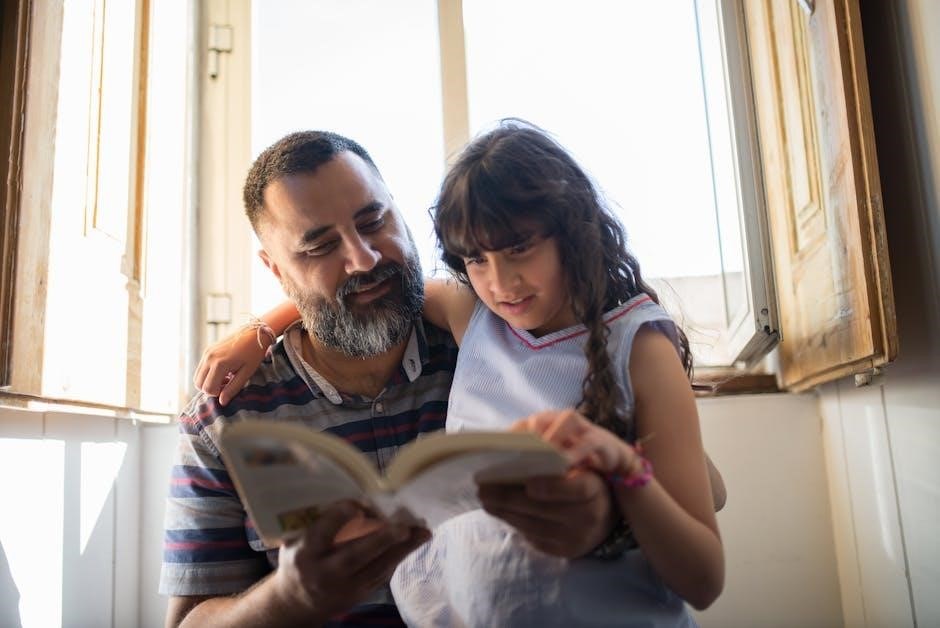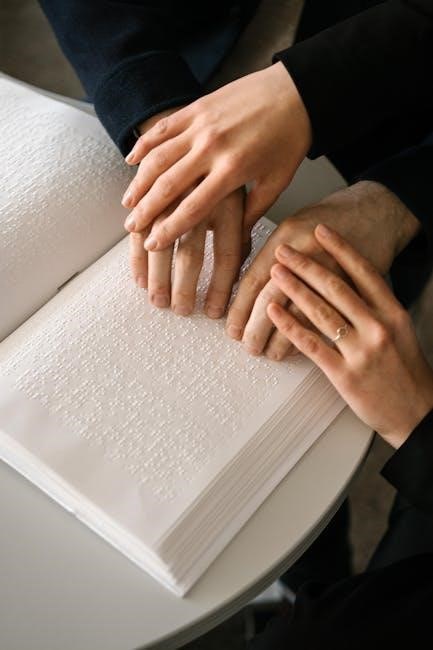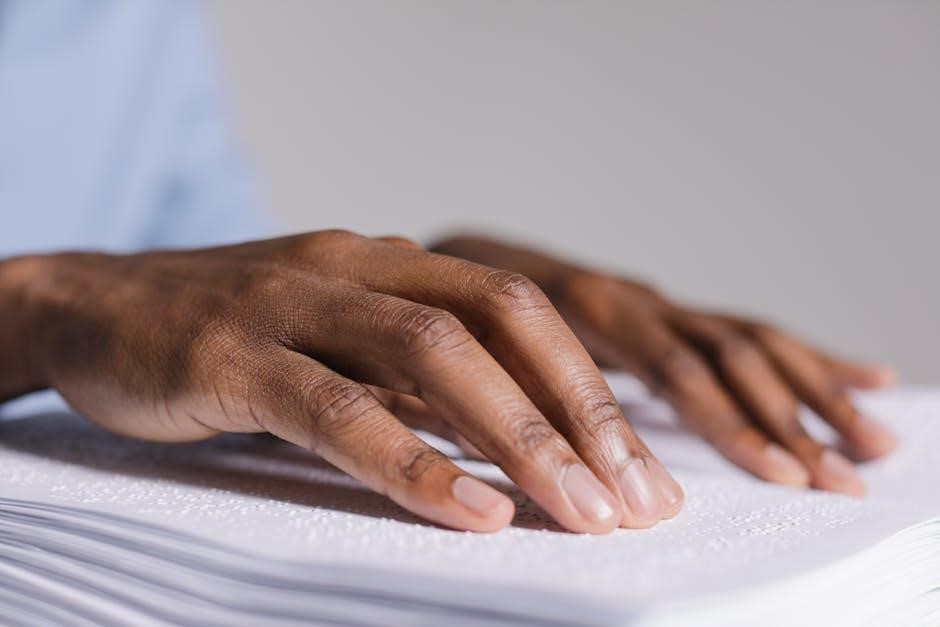The Hajj is a sacred Islamic pilgrimage to Mecca‚ fulfilling one of the Five Pillars of Islam. This guide provides a comprehensive‚ step-by-step walkthrough of the rituals‚ practical tips‚ and spiritual reflections‚ ensuring a meaningful and organized journey for pilgrims seeking to fulfill this divine obligation with clarity and devotion.
Significance of Hajj in Islam
Hajj‚ one of the Five Pillars of Islam‚ holds profound spiritual and historical significance. It embodies the unity and equality of Muslims worldwide‚ symbolizing their collective submission to Allah. The pilgrimage retraces the footsteps of Prophet Ibrahim and his family‚ particularly Hajar and Ismail‚ highlighting divine trials and unwavering faith. The rituals‚ such as Ihram‚ Tawaf‚ and the Day of Arafat‚ deepen pilgrims’ connection to Allah‚ fostering self-reflection and spiritual renewal. This sacred journey is a once-in-a-lifetime obligation for able Muslims‚ culminating in forgiveness and a renewed commitment to faith. The guide provides insights into these rituals‚ ensuring a meaningful experience.
Overview of the Hajj Journey

Hajj is a five-day pilgrimage to Makkah‚ Saudi Arabia‚ performed during the Islamic month of Dhu al-Hijjah. Pilgrims follow a sequence of rituals that begin in Makkah‚ proceed to Arafat‚ Muzdalifah‚ and Mina‚ and conclude in Makkah. The journey includes key events such as donning Ihram‚ performing Tawaf‚ spending the Day of Arafat‚ and symbolically stoning Satan. These rituals are physically and emotionally demanding‚ requiring pilgrims to detach from worldly comforts and focus on spiritual renewal. The pilgrimage culminates with Eid al-Adha‚ celebrating Prophet Ibrahim’s devotion. Proper preparation and adherence to Islamic guidelines ensure a meaningful experience.

Preparation for Hajj
Hajj preparation involves physical‚ moral‚ and spiritual readiness. Pilgrims must ensure health‚ obtain visas‚ plan finances‚ and arrange accommodations. Moral and spiritual preparation includes seeking knowledge and intending righteousness.
Spiritual Preparation and Intention
Spiritual preparation for Hajj begins with sincere intention (niyyah) to seek Allah’s pleasure. Pilgrims must repent‚ seek forgiveness‚ and resolve to uphold Islamic teachings. Reciting prayers‚ engaging in charity‚ and avoiding sins are vital. The heart should focus on purity and devotion‚ while the mind reflects on the journey’s symbolic connection to Prophet Ibrahim (AS) and the Hereafter. Strengthening faith‚ practicing humility‚ and cultivating gratitude are essential. Pilgrims should also memorize key supplications and understand the spiritual significance of each ritual to fully immerse in the sacred experience.
Logistical and Financial Planning
Logistical and financial planning is crucial for a smooth Hajj experience. Pilgrims must secure a Hajj visa‚ book flights‚ and arrange accommodations in Makkah and Madinah. Researching reliable travel agencies specializing in Hajj packages is recommended. Budgeting for transportation‚ lodging‚ and daily expenses is essential. Saving specifically for Hajj expenses and allocating funds for mandatory vaccinations and medications is vital. Purchasing comprehensive travel insurance covering medical emergencies and trip cancellations is advisable. Organizing documents like passports‚ visas‚ and health certificates‚ and keeping them easily accessible‚ ensures readiness for the journey. Proper planning prevents last-minute hassles and allows focus on the spiritual aspects of Hajj.
Essential Items to Pack
Pack light yet wisely for Hajj; Include comfortable‚ modest clothing suitable for the climate‚ such as lightweight fabrics and rain gear. Bring a prayer mat‚ slippers‚ and toiletries. Carry a reusable water bottle‚ sunhat‚ and sunglasses for outdoor protection. Include a first-aid kit with medications‚ sunscreen‚ and insect repellent. Bring essential documents like passports‚ visas‚ and medical records in a secure pouch. Pack a portable phone charger‚ power bank‚ and universal adapter. Include snacks‚ a money pouch‚ and a small notebook for jotting notes. Ensure all items comply with airline and Saudi regulations. Organize belongings for easy access during the journey.
Understanding Miqat and Ihram
Miqat refers to designated boundary points from which pilgrims must enter a state of Ihram‚ a sacred state of purity. There are specific Miqat locations depending on the pilgrim’s direction of travel. Upon reaching Miqat‚ pilgrims recite their intention to perform Hajj or Umrah and don the Ihram attire. Men wear two seamless white cloths‚ while women wear modest‚ lightweight clothing. During Ihram‚ certain actions are prohibited‚ such as trimming nails‚ using fragrances‚ or hunting; The uniform attire symbolizes equality and spiritual focus. Pilgrims must maintain this state until completing the rituals‚ ensuring adherence to Islamic guidelines throughout their journey.

Step-by-Step Guide to Hajj Rituals
Hajj involves a series of sacred rituals‚ beginning with Ihram‚ followed by Tawaf‚ Sai‚ Arafat‚ and the Stoning Ritual. Pilgrims fulfill these acts in sequence‚ reflecting deep spiritual devotion.
Entering Ihram and Reciting Talbiyah
Entering Ihram is the first ritual of Hajj‚ marking the pilgrim’s commitment to the journey. It involves wearing simple‚ unsewn garments (Ihram clothing) and reciting the Talbiyah prayer. Men wear a white towel (Izar) and a seamless cloth (Rida)‚ while women wear modest attire. Pilgrims must enter a state of purity and intention‚ refraining from worldly desires. The Talbiyah‚ recited aloud‚ expresses submission to Allah: “Labbaik‚ Allahumma Labbaik” (“Here I am‚ O Allah‚ here I am”). This act symbolizes humility‚ unity‚ and readiness to fulfill the sacred rites ahead. It is recited upon entering the sacred state and throughout the journey.
Performing Tawaf and Sai

Tawaf is the act of circumambulating the Kaaba seven times‚ a central Hajj ritual. Pilgrims begin at the Black Stone‚ keeping the Kaaba to their left. Each circuit involves specific prayers and supplications‚ expressing devotion and gratitude. Men are required to perform Raml (brisk walking) during the first three rounds. After completing Tawaf‚ pilgrims perform Sai‚ running seven times between the hills of Safa and Marwa. This commemorates Hagar’s search for water. Both rituals symbolize obedience to Allah and spiritual purification. They are essential steps in fulfilling the Hajj rites‚ connecting pilgrims to Islamic history and faith. The acts embody humility and submission.
Visiting Arafat and Spending the Day
Arafat‚ or the Mount of Mercy‚ is a pivotal stop during Hajj. Pilgrims arrive by sunrise on the 9th of Dhul-Hijjah and spend the day in worship. The Prophet Muhammad (PBUH) emphasized Arafat as the essence of Hajj‚ where Allah forgives sins. Pilgrims perform Wuquf‚ standing in supplication‚ and listen to the sermon. The day is spent in prayer‚ reflection‚ and seeking mercy. Pilgrims must remain until sunset‚ known as Maghrib. Arafat symbolizes spiritual renewal and humankind’s unity before Allah. The experience strengthens faith and prepares pilgrims for the remaining rituals.
Staying in Muzdalifah and Collecting Pebbles
After sunset at Arafat‚ pilgrims proceed to Muzdalifah‚ where they spend the night under the open sky. This stop is a test of patience and trust in Allah. Pilgrims combine the Maghrib and Isha prayers at Muzdalifah. They also collect 49 or 70 small pebbles for the stoning ritual at Jamarat. The pebbles must be gathered before dawn. Pilgrims should remain in Muzdalifah until just before sunrise‚ reflecting on their journey. This phase reinforces humility and prepares pilgrims for the final stages of Hajj‚ emphasizing reliance on Allah’s guidance and provision.
Performing the Stoning Ritual (Jamarat)
The stoning ritual at Jamarat is a pivotal act symbolizing the rejection of evil. Pilgrims stone three pillars in Mina‚ representing Satan’s temptation of Prophet Ibrahim‚ Hagar‚ and Ismail. The largest pillar‚ Jamratul Aqabah‚ is stoned first‚ followed by the middle and smallest pillars. Each stone must be thrown with the intention of rejecting sin and negativity. Pilgrims use the pebbles collected from Muzdalifah‚ ensuring they are thrown respectfully. The ritual is performed after midday‚ ideally when the sun is high. This act reinforces moral courage and spiritual purification‚ culminating in the completion of Hajj’s primary rites and the celebration of Eid al-Adha.
Trimming or Shaving Hair and Completing Umrah
After performing the stoning ritual at Jamarat‚ pilgrims trim or shave their hair‚ marking the completion of Umrah. This act‚ known as Halq or Taqsir‚ signifies purification and equality among all Muslims. Men typically shave their heads‚ while women trim their hair‚ symbolizing a spiritual renewal. This step concludes the Ihram state‚ allowing pilgrims to resume normal activities. It represents humility and a commitment to faith‚ seeking forgiveness and spiritual rejuvenation. The act is a final gesture of devotion‚ embodying the essence of Hajj and Umrah as pilgrims prepare to celebrate Eid al-Adha. This ritual signifies the completion.

Understanding Umrah
Umrah is an Islamic pilgrimage to Mecca‚ considered a minor or optional Hajj. It can be performed at any time of the year and involves rituals like Tawaf and Sai‚ seeking Allah’s forgiveness and blessings.
Differences Between Hajj and Umrah
Hajj and Umrah are both sacred Islamic pilgrimages but differ in obligations and procedures. Hajj is mandatory for every able Muslim once in a lifetime‚ performed during Dhu al-Hijjah. Umrah‚ known as the “minor pilgrimage‚” is voluntary and can be undertaken any time of the year. Hajj includes additional rituals like visiting Mount Arafat and Muzdalifah‚ while Umrah focuses on Tawaf (circumambulating the Kaaba) and Sai (running between Safa and Marwa). Hajj is more elaborate‚ requiring specific timings and steps‚ whereas Umrah is shorter and more flexible. Both share the goal of seeking Allah’s forgiveness and spiritual growth but differ in scope and requirements.

Step-by-Step Umrah Rituals
Umrah begins with entering Ihram‚ a sacred state requiring specific attire and intentions. Recite the Talbiyah prayer upon nearing Mecca. Perform Tawaf by circling the Kaaba seven times‚ then drink Zamzam water. Proceed to Sai by walking between Safa and Marwa hills. Conclude Umrah by trimming or shaving hair. Offer a final prayer near the Kaaba. These steps reflect devotion and purification‚ fulfilling the Umrah pilgrimage with humility and gratitude to Allah.
Combining Umrah with Hajj
Combining Umrah with Hajj is a common practice‚ allowing pilgrims to perform both rituals during their visit. Enter Ihram for Umrah first‚ perform Tawaf and Sai‚ and then trim or shave hair. Afterward‚ maintain Ihram for Hajj without changing clothes. This method is called Hajj Tamattu‚ where Umrah is completed before Hajj begins. It is convenient for those who want to maximize their spiritual experience. Ensure all rituals are performed correctly to avoid any issues. Combining Umrah with Hajj is a rewarding way to fulfill both pilgrimages efficiently and deepen your connection with Allah.

Practical Tips for Hajj
Plan meticulously‚ stay hydrated‚ and carry essentials like a compass and comfortable shoes. Prioritize health‚ stay organized‚ and maintain a patient‚ positive mindset throughout the journey.
Health and Safety Guidelines
Ensure vaccinations and medical check-ups before traveling‚ especially for chronic conditions. Carry a first-aid kit‚ personal medications‚ and stay hydrated. Wear breathable‚ modest clothing and apply SPF for sun protection. Avoid overcrowded areas to prevent accidents and follow crowd management instructions. Maintain personal hygiene‚ use hand sanitizers‚ and avoid close contact with sick individuals. Stay mentally prepared for crowded conditions and manage stress. Keep emergency contact details handy and stay informed about weather updates. Prioritize rest when needed and seek medical help immediately if unwell. Stay vigilant and aware of your surroundings to ensure a safe and healthy Hajj experience.
Managing Time and Crowds Effectively
Plan meticulously to adhere to Hajj schedules‚ ensuring timely arrival for rituals like Tawaf and Arafat. Stay with your group and designate meeting points in case of separation. Use technology‚ such as GPS trackers‚ to stay connected. Avoid peak times for rituals to minimize congestion. Move steadily through crowds to prevent bottlenecks and stay patient amid large gatherings. Allocate extra time for travel between holy sites due to crowds. Keep essential items easily accessible to avoid delays. Stay informed about crowd movements and follow instructions from authorities. Prioritize energy conservation by taking short breaks. Effective time and crowd management ensures a smoother‚ more spiritual experience.
Staying Connected and Organized
Stay connected with family and group members using reliable communication apps and shared GPS trackers. Carry identification tags with emergency contacts and ensure all group members have a copy of the itinerary. Use a travel wallet to keep documents like passports‚ visas‚ and tickets organized. Designate a meeting point in case of separation. Keep a checklist of essential items and rituals to track progress. Assign a group leader to coordinate movements and decisions. Stay updated on announcements from Hajj authorities through official apps or websites. Maintain a balance between technology use and spiritual focus to ensure a seamless experience.

Spiritual Reflections and Duas
Hajj is a journey of self-reflection‚ seeking forgiveness‚ and strengthening devotion; Engage in heartfelt duas‚ expressing gratitude and humility. Connect deeply with Allah through sincere supplications.
Important Supplications for Hajj
Reciting specific supplications during Hajj enhances its spiritual significance. The Talbiyah‚ “Labbaik Allahumma Labbaik‚” is uttered upon entering Ihram. At Arafat‚ pilgrims recite the dua‚ “There is no deity but Allah alone…” Seeking forgiveness and mercy is central. During Tawaf‚ supplicate‚ “Our Lord‚ grant us what is good in this life…” and “Exalt my mention…” Use the journey to invoke blessings‚ health‚ and provision. The Prophet’s supplication‚ “O Allah‚ make this a blessed and accepted Hajj‚” is also recommended. Sincerity and focus on the meanings elevate these prayers‚ connecting pilgrims deeply with Allah during the sacred rites.
Reflecting on the Journey and Its Meaning
Hajj is a profound spiritual journey that invites deep reflection and introspection. Pilgrims often contemplate the purpose of life‚ their relationship with Allah‚ and their commitment to faith. The rites of Hajj symbolize unity‚ sacrifice‚ and humility‚ mirroring Prophet Ibrahim’s unwavering obedience. Reflecting on the journey helps pilgrims identify personal weaknesses‚ fostering self-improvement. The experience strengthens faith‚ renews spiritual energy‚ and deepens gratitude. It also highlights the global unity of Muslims‚ transcending cultural and linguistic barriers. Returning home‚ pilgrims carry these reflections‚ striving to embody the values of Hajj in daily life and embracing a renewed sense of purpose and devotion.
Hajj is a transformative journey of faith‚ unity‚ and self-discovery. It strengthens spiritual bonds‚ fosters global Muslim solidarity‚ and rejuvenates the soul. Pilgrims return home inspired.
Final Thoughts on the Hajj Experience
Hajj is a profound spiritual odyssey that transcends physical challenges‚ offering deep introspection and renewal. Pilgrims return transformed‚ carrying memories of unity‚ divine connection‚ and personal growth. The journey‚ rooted in faith and tradition‚ fosters resilience and humility‚ leaving an indelible mark on one’s soul. It is a testament to Islam’s universal appeal‚ uniting believers from all walks of life. The lessons learned—patience‚ gratitude‚ and surrender—become lifelong guiding principles. Hajj is not just a pilgrimage but a transformative experience that reshapes one’s relationship with faith‚ self‚ and humanity‚ leaving a lasting legacy of spiritual awakening and enlightenment.

Returning Home with a Renewed Spirit
After completing Hajj‚ pilgrims return home with a renewed spirit‚ carrying the transformative experiences and spiritual growth. The journey leaves them with a deeper connection to faith‚ fostering humility‚ empathy‚ and gratitude. They are inspired to embrace a more righteous lifestyle‚ applying the lessons of patience and unity learned during Hajj. Many feel rejuvenated‚ ready to face life’s challenges with renewed purpose and strength. The pilgrimage not only enriches their personal lives but also influences their communities‚ as they share their experiences and embody the values of Islam. Hajj’s impact is a lifelong blessing‚ guiding them toward a more meaningful and devout existence.
